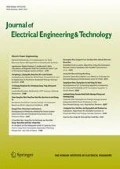Abstract
This article investigates the effects of different gate coupling voltage and gate voltage duration on electro-static discharge (ESD) performance of several NMOS-based power rail protection devices. Through simulation and transmission line pulse (TLP) test, it is found that there are two modes in the conduction process of the main clamping NMOS: channel conduction state and parasitic NPN conduction state. Different gate voltage and duration bring the two conduction states different proportions in the whole working process, which give the device very different robustness. The results show that under the condition of small gate voltage and long duration and the condition of large gate voltage and short duration, the device can achieve optimal performance because the trigger voltage can be reduced, and the parasitic NPN can be turned on in time to release most of the current.










Similar content being viewed by others
References
Ker M, Lin K (2005) The impact of low-holding-voltage issue in high-voltage CMOS technology and the design of latchup-free power-rail ESD clamp circuit for LCD driver ICs. IEEE J Solid-State Circuits 40(8):1751–1759
Chang R, Ker M (2020) Design of high-voltage-tolerant power-rail ESD protection circuit for power pin of negative voltage in low-voltage CMOS processes. IEEE Trans Electron Devices 67(1):40–46
Sarbishaei H, Semenov O, Sachdev M (2008) A new flip-flop-based transient power supply clamp for ESD protection. IEEE Trans Device Mater Reliab 8(2):358–367
Chen S, Ker M (2009) Area-Efficient ESD-transient detection circuit with smaller capacitance for on-chip power-rail ESD protection in CMOS ICs. IEEE Trans Circuits Syst II Express Briefs 56(5):359–363
Chen J, Ker M (2018) Design of power-rail ESD clamp with dynamic timing-voltage detection against false trigger during fast power-ON events. IEEE Trans Electron Devices 65(3):838–846
Lu G, Wang Y, Zhang X (2016) Transient and static hybrid-triggered active clamp design for power-rail ESD protection. IEEE Trans Electron Devices 63(12):4654–4660
Mertens R, Thomson N, Xiu Y, Rosenbaum E (2015) Analysis of Active-Clamp Response to Power-On ESD: Power Supply Integrity and Performance Tradeoffs. IEEE Trans Device Mater Reliab 15(3):263–271
Cao Y, Glaser U (2013) Novel active ESD clamps for high-voltage applications. IEEE Trans Device Mater Reliab 13(2):388–397
Miller JW, Stockinger M, Ruth S, Gerdemann A, Etherton M, Moosa M (2014) RC triggered active ESD clamps; How should they behave under powered conditions?. In: 2014 ieee international conference on IC design & technology, Austin, TX, pp 1–5
Yeh C, Ker M (2010) Capacitor-less design of power-rail ESD clamp circuit with adjustable holding voltage for on-chip ESD protection. IEEE J Solid-State Circuits 45(11):2476–2486
Yeh C, Ker M (2012) Resistor-less design of power-rail ESD clamp circuit in nanoscale CMOS technology. IEEE Trans Electron Devices 59(12):3456–3463
Li J, Gauthier R, and Rosenbaum E (2004) A compact, timed-shutoff, MOSFET-based power clamp for on-chip ESD protection. In 2004 Electrical Overstress/Electrostatic Discharge Symposium, Grapevine, TX, pp 1–7.
Kim D, Park J and Park S (2008) Area-efficent power clamp circuit using gate-coupled structure for Smart Power ICs. In: 2008 International SoC Design Conference, Busan, pp I-429-I-430.
Chen S, and Ker M (2008) Optimization on NMOS-based power-rail ESD clamp circuits with gate-driven mechanism in a 0.13-μm CMOS technology. In: 2008 15th IEEE international conference on electronics, circuits and systems, St. Julien's, pp 666–669
Zheng Y, Jin X, Wu J, Wang Y, Zhang A, and Zhang H (2019) Investigation on the Turn-On Time of Rc-Triggered Power Clamps Based on 0.18-μm BCD Process. In: 2019 12th International Workshop on the Electromagnetic Compatibility of Integrated Circuits (EMC Compo), Hangzhou, China, pp 192–194
Chen Y, Liou T, Wong S (2019) Novel RC-Clamp Design for High Supply Voltage. In: 2019 IEEE International Reliability Physics Symposium (IRPS), Monterey, CA, USA, pp. 1–6.3
Elghazali M, Sachdev M, Opal A (2018) An nMOS static ESD power supply clamp with thyristor delay element and 180 pA leakage in 65 nm CMOS technology. IEEE Trans Device Mater Reliab 18(1):97–104
Stockinger M, Mertens R (2017) RC-triggered ESD clamp with low turn-on voltage. In: 2017 IEEE Custom Integrated Circuits Conference (CICC), Austin, TX, pp 1–4
Lee JH, Shih JR, Wu YH, et al. (2003) The failure mechanism of high voltage tolerance IO buffer under ESD. In: 2003 IEEE International Reliability Physics Symposium Proceedings, 2003. 41st Annual., Dallas, TX, USA, pp 269–276
Wang Y, Chen X (2020) Dong P (2020) Improvement on ESD current handling capability for HV multi-finger nLDMOS devices with self-triggered technique. Semicond Sci Technol 35(6):065010
Chatty K, Alvarez D, Abou-Khalil MJ, et al. (2008) Investigation of ESD performance of silicide-blocked stacked NMOSFETs in a 45nm bulk CMOS technology. In: EOS/ESD 2008 - 2008 30th Electrical Overstress/Electrostatic Discharge Symposium, Tucson, AZ, pp 304-312.
Acknowledgments
This work was supported by the National Natural Science Foundation of China (Grant No. 61704145, 61774129, 61827812), the Hunan Provincial Natural Science Foundation of China (Grant No. 2019JJ50609) and the Key Technology Program of Changsha (Grant No. kq1902042).
Author information
Authors and Affiliations
Corresponding author
Additional information
Publisher's Note
Springer Nature remains neutral with regard to jurisdictional claims in published maps and institutional affiliations.
Rights and permissions
About this article
Cite this article
Wei, W., Wang, Y., Chen, X. et al. Investigation of Different Conduction States on the Performance of NMOS-Based Power Clamp ESD Device. J. Electr. Eng. Technol. 16, 1583–1589 (2021). https://doi.org/10.1007/s42835-021-00684-x
Received:
Revised:
Accepted:
Published:
Issue Date:
DOI: https://doi.org/10.1007/s42835-021-00684-x



